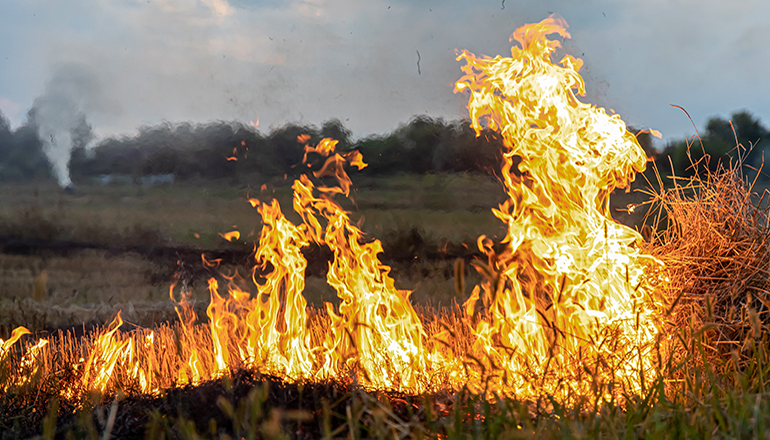Roadway accidents and combine fires make harvest the most dangerous time of the year for those who work in America’s most dangerous occupation – farming, says University of Missouri Extension health and safety specialist Karen Funkenbusch.
“Unfortunately, these fires happen all the time,” adds John Worden, interim coordinator of MU Extension’s Fire and Rescue Training Institute. “Because of the severe drought conditions and high winds we had recently, it’s just been the right mix to make a fire explode and get away.”
The combination of high temperatures, dry crops, and woodland debris along with leaking fuel, cracked hoses and heated bearings and belts creates a volatile situation that results in lost productivity, lost property, and personal injuries.
Nationwide Agribusiness Insurance reports that large machinery fires cause about $20 million in property losses annually.
Fortunately, farmers can prevent many of these losses by taking extra precautions, says Funkenbusch. She lists four main ways to curtail losses:
- Planning. Equip tractors, combines, and grain trucks with at least one ABC fire extinguisher. Ideally, there should be two – one in the cab and one at ground level in an easy-to-access area. Keep a shovel onboard combines and in trucks to dig dirt to throw on small fires to prevent the flames from spreading. Know the GPS coordinates for your field and carry a charged cellphone to alert emergency personnel. Train all those who might be helping with the harvest – including employees and family members – on what to do in the event of an emergency.
- Maintain. Clean combines by power-washing grease, oil, and crop residue daily. You can also use an air compressor to blow chaff from equipment. Check and repair leaking fuel and oil hoses and worn belts and bearings. Pay special attention to the engine and hydrostatic pump parts where most machinery fires start.
- Monitor. Advanced sensor technology on combines helps to detect hot spots, but alert humans can use their eyes and noses to detect fires.
- Act. Call 911 immediately before trying to extinguish the fire yourself.
Use the fire extinguisher and throw dirt to create a soil perimeter to contain small fires. Always practice personal safety first.
Keep your cell phone charged to call the fire department, says Worden. The cellphone also gives GPS coordinates to help emergency personnel locate you in rural areas. Know the nearest county road number and the road’s location nearest your field.
Avoid harvesting during extremely windy conditions. High temperatures, low relative humidity, and wind speeds of more than 20 mph are ingredients for disaster. The Missouri Mesonet weather station network, operated by MU Extension, gives valuable wind speed information for many areas of the state at this link.
If possible, have a disc and a large water tank nearby. Some safety experts recommend using a ground chain attached to the combine frame to prevent static electricity from igniting residue. Let the chain drag on the ground while in the field.
Also, let your combine cool for at least 15 minutes before fueling or storing in the shed for the evening, says Funkenbusch.
Finally, take precautions to protect human life, says Worden. Wait until trained emergency personnel arrive if containing the fire becomes dangerous.
(Photo licensed via Envato Elements)


